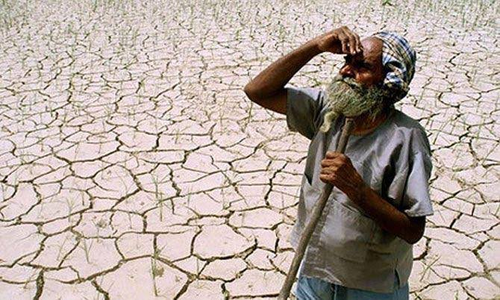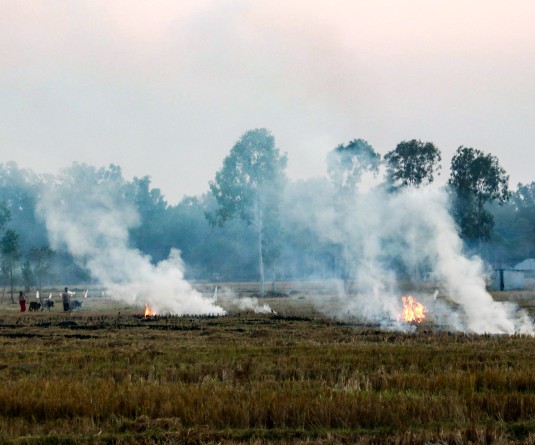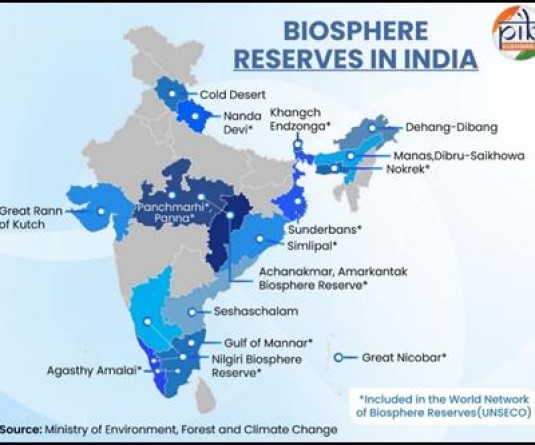IANS Photo

New Delhi, November 19 (IANS): The 2023 United Nations Climate Change Conference or COP28 hosted by the United Arab Emirates in Dubai will take place between November 30 and December 12 in the backdrop of recent unprecedented heatwaves, droughts, floods and wildfires that have wreaked havoc, especially in climate-vulnerable countries.
The scientific community says these extreme weather events reinforce just how urgent it is for the world to tackle the climate crisis, improve people’s lives and livelihoods and to keep 1.5 degrees Celsius alive through net-zero economy transition.
COP28 brings together world leaders, policymakers, scientists, and stakeholders from across the globe for course-correct by deliberating on strategies and commitments that will shape the future of our planet.
Forests are an integral part of the climate solution as they contain 662 billion tonnes of carbon, which is more than half of the global carbon stock in soils and vegetation.
Greenhouse gas levels have hit a record high again.
According to a new report from the World Meteorological Organisation (WMO), carbon dioxide (CO2) concentrations were a full 50 per cent above the pre-industrial era for the first time in 2022 and there is no end in sight to the rising trend.
Methane concentrations also grew, and levels of nitrous oxide, the third main gas, saw the highest year-on-year increase on record from 2021 to 2022, according to the ‘Greenhouse Bulletin’, which is published to inform people about the COP28 negotiations.
“Despite decades of warnings from the scientific community, thousands of pages of reports and dozens of climate conferences, we are still heading in the wrong direction,” WMO Secretary-General Professor Petteri Taalas said.
A latest report from UN Climate Change finds national climate action plans remain insufficient to limit global temperature rise to 1.5 degrees Celsius and meet the goals of the Paris Agreement -- the landmark climate treaty concluded in 2015.
Even with increased efforts by some countries, the report shows much more action is needed now to bend the world’s emissions trajectory further downward and avoid the worst impacts of climate change.
“Today’s (November 14) report shows that governments combined are taking baby steps to avert the climate crisis. And it shows why governments must make bold strides forward at COP28 in Dubai, to get on track,” said the Executive-Secretary of UN Climate Change, Simon Stiell.
“This means COP28 must be a clear turning point. Governments must not only agree what stronger climate actions will be taken but also start showing exactly how to deliver them.”
The latest science from the UN’s Intergovernmental Panel on Climate Change indicates that greenhouse gas emissions need to be cut 43 per cent by 2030, compared to 2019 levels. This is critical to limit temperature rise to 1.5 degrees by the end of this century and avoid the worst impacts of climate change, including more frequent and severe droughts, heatwaves and rainfall.
The world is failing to get a grip on the climate crisis, warned UN Secretary-General António Guterres.
Global ambition stagnated over the past year and national plans are strikingly misaligned with science, he said. “COP28 must be the place to urgently close the climate ambition gap.”
From the base of Mt. Everest on October 30, the UN chief issued a strong call, “The world cannot wait!”
“We cannot address climate catastrophe without tackling its root cause: fossil fuel dependence,” he said in response to a report showing increasing fossil fuel production.
The UN has been bringing together almost every country on earth for global climate summits -- called COPs -- which stands for ‘Conference of the Parties’. This process led to the landmark Paris Agreement.
Climate extremes, whether multi-year droughts or extreme floods, are affecting every major food-producing region and are threatening agricultural productivity, reducing food security, disrupting food supply chains and eroding the livelihoods of billions of people.
A report from National Oceanic and Atmospheric Administration’s (NOAA) National Center for Environmental Information states after the warmest October last month, the 174-year global climate record, there is a 99 per cent chance that 2023 will set a new annual record.
The current hottest year on record is 2016. Seven of the past 10 years are on the list of warmest years on record.
Over the past year, Canada’s unprecedented forest blaze is perhaps the most severe. Wildfires release methane, which accelerates climate change.
Another warning comes in the run-up to COP28 by the UN Convention to Combat Desertification (UNCCD) is that sand and dust storms are an under-appreciated problem now “dramatically” more frequent in some places worldwide, with at least 25 per cent of the phenomenon attributed to human activities.
With impacts far beyond the source regions, an estimated 2 billion tonnes of sand and dust now enters the atmosphere every year, an amount equal in weight to 350 Great Pyramids of Giza.
In some areas, desert dust doubled in the last century.
With the ongoing severe floods in the Horn of Africa, worsened by El Niño, at least 7,00,000 people have been displaced.
A new study from McGill University researchers, in collaboration with researchers in Spain, Mexico, Portugal, Denmark, Australia, South Africa and other universities in Canada, investigates the importance of temperature in determining where animal species are currently found to better understand how a warming climate might impact where they might live in the future.
To find out, the researchers tested the role of temperature as a factor that could limit a species’ potential habitat range.
They compared the temperatures and areas where 460 cold-blooded animal species currently, live to the temperatures and areas where they could live, based on their tolerance to temperatures.
They found that, unlike species living in the ocean, land animals such as reptiles, amphibians and insects have habitat ranges that are less directly impacted by temperature.
The higher a species is in latitude, the lower its tendency to live in areas near the equator with temperatures they could tolerate, the researchers say. This means that, instead of tolerance to temperature, negative interactions with other species -- like with competitors or parasites -- could be what keep these species away from this potential habitat.
Let’s work together to make COP28 the turning point to course-correct -- not too late to bring the world back on the 1.5-degree path.






